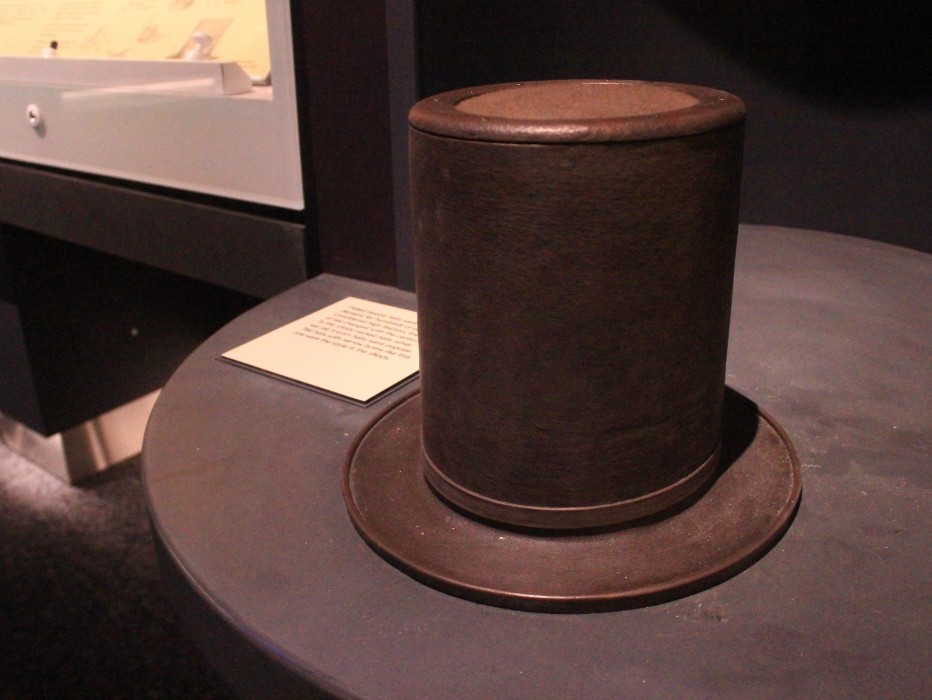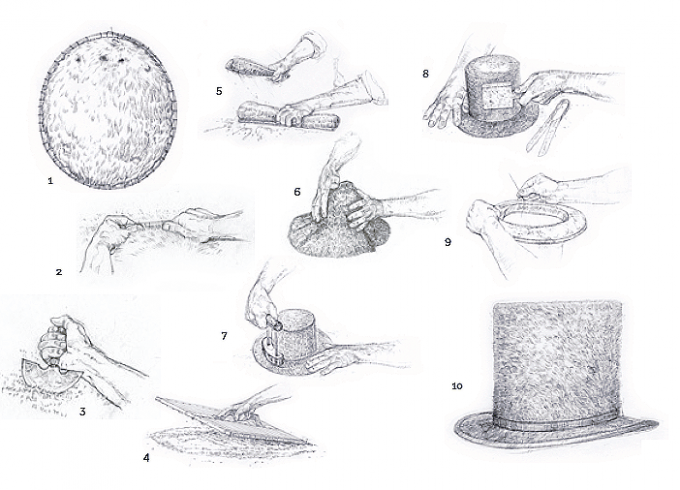Visit / Points of Interest / Museum at the Gateway Arch / Jefferson's Vision


Visit / Points of Interest / Museum at the Gateway Arch / Jefferson's Vision

Men’s hats were an important fashion accessory in the 1800s, and the best-quality felt was made from the under fur of the beaver. The process began with mountain men, who trapped the beaver in mountain streams in the Rockies. They brought the pelts to the annual rendezvous where St. Louis buyers weighed and purchased them. A long caravan of heavily-guarded wagons traveled down the Platte River Road to St. Louis, where company men sorted and packed the pelts for shipping to hatters in the eastern United States and Europe.
In the factory, making a beaver hat included three stages of production: preparation, felting, and shaping. Beaver fur consists of the coarse outer guard hair and soft under fur, called wool. The guard hairs were removed and the wool sorted by color and carded. Moisture was added and the wool agitated in a process called felting, making it tangle and shrink to create a pliable piece of material. The felts were stretched tight over wooden molds to be shaped, dried and then dyed. A stiffening agent was applied with steam to seal and create the final shape of the hat.
In the factory, making a beaver hat included three stages of production: preparation, felting, and shaping. Beaver fur consists of the coarse outer guard hair and soft underfur, called wool. The guard hairs were removed and the wool sorted by color and carded. Moisture was added and the wool agitated in a process called felting, making it tangle and shrink to create a pliable piece of material. The felts were stretched tight over wooden molds to be shaped, dried and then dyed. A stiffening agent was applied with steam to seal and create the final shape of the hat.


You have the power to shape the future of St. Louis.
Help keep Gateway Arch National Park a vibrant symbol of local pride, global acclaim, and inspiration for millions of visitors each year.
Join today to enjoy exclusive member benefits and make a lasting impact on this iconic landmark and downtown St. Louis.
Make Your Mark